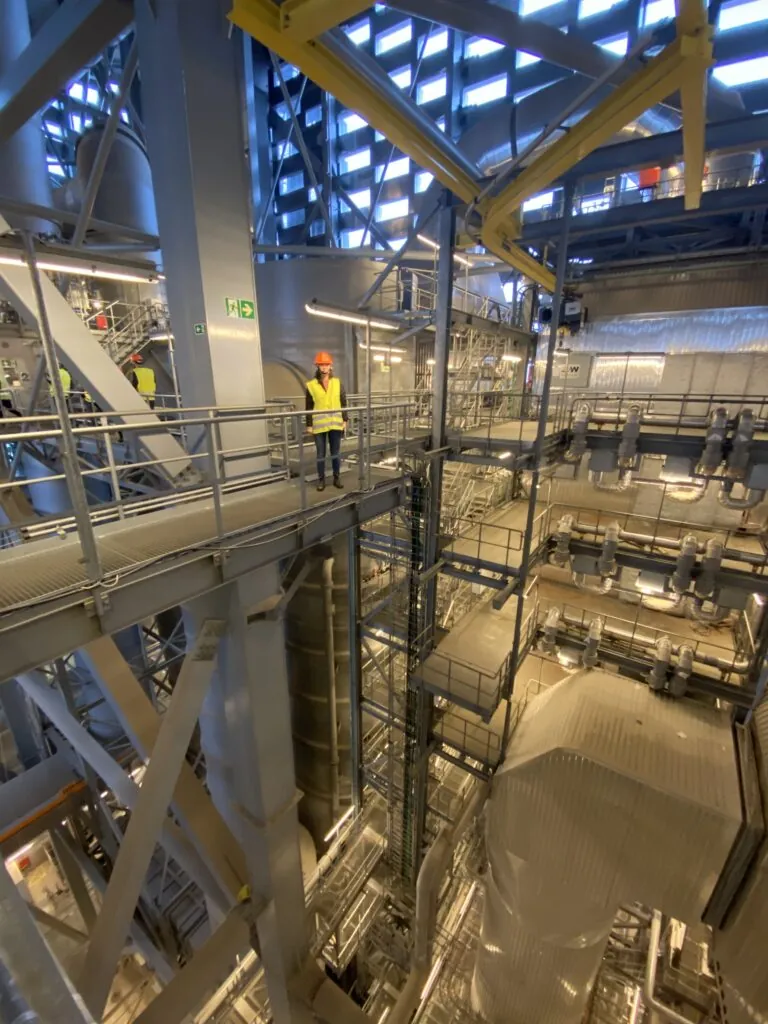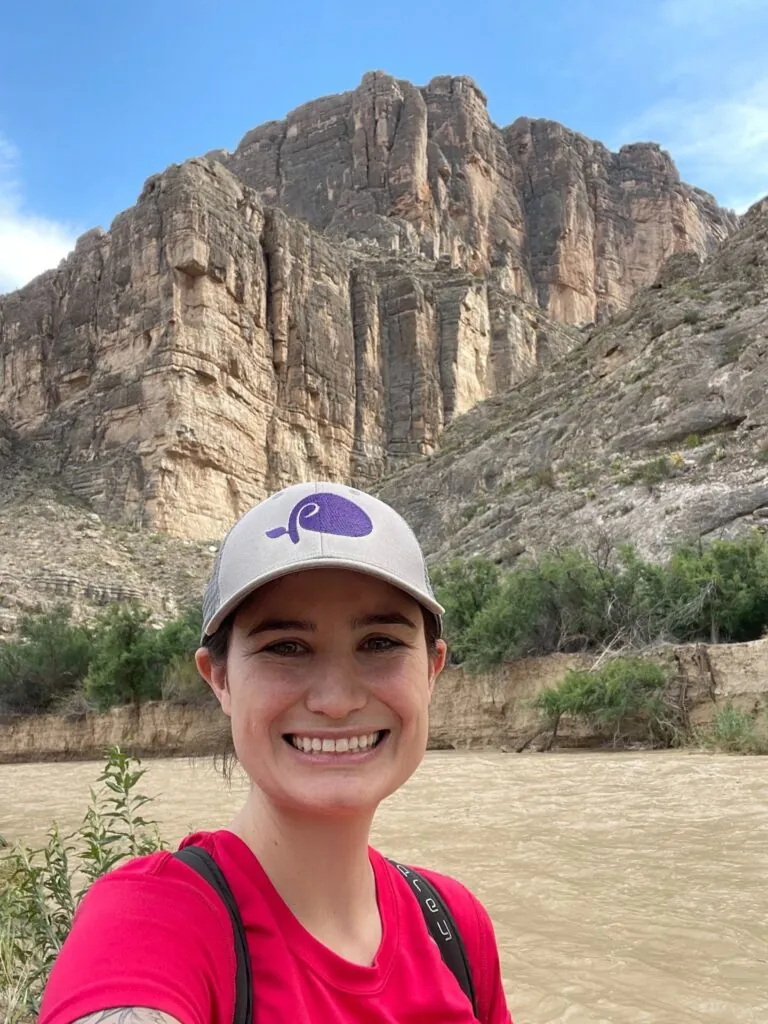We’re excited to share that Kelly LaBuff is joining us at Building Ventures for the semester. An MBA candidate at Harvard Business School, Kelly is currently taking a course exploring the venture capital journey with Jeff Bussgang of Flybridge and Lindsay Hyde of Moderne Ventures. In order to experience working in venture capital firsthand, students in the course complete a semester-long externship.
Kelly’s passion for climate solutions, her commitment to supporting entrepreneurs, and her enthusiasm for innovations in the built environment has made her a natural fit as well as a welcome addition to our team. I asked Kelly a few questions, about her motivation for joining the team, her vision for a better built world, and more.
What made you want to join the team at Building Ventures?
I was excited by the opportunity to learn from an amazing team and dive into the vast world of the built environment. I actually had my first exposure to built environment systems when I was working as a systems design engineer and operator at agtech startups Plenty and Sensei Ag. At those companies, our teams used or interfaced a lot with 3D design and A&E toolkits to deploy vertical farms within existing warehouses. As a result, I cultivated an interest in better understanding the bones and connective tissue of the built environment, specifically mechanical, electrical, plumbing, and structural systems. I also realized there were many interesting challenges—and, really, opportunities—for better data collection and transparency along the way.

Kelly pictured here at Amager Bakke, the waste-to-energy facility in Copenhagen.
I was also really inspired by the Building Ventures portfolio and high caliber team. The portfolio provides a unique opportunity to learn from the best entrepreneurs and observe a breadth of products and business models at different growth stages in the industry. The team has a depth of institutional knowledge in operations and investing. They have repeatedly shown that they are willing to both really help their portfolio companies and mentor and develop their internal team. What they created is unique in the world of venture—a culture that is collaborative, diverse, and extremely intellectually sharp.
What are you most excited about working on?
I’m excited to dive deeper into two different topics: the residential tech stack and overall ESG and climate metrics for built environment startups.
There is significant tension in the current housing market: the steady increase in interest rate to combat inflation is ultimately squeezing mortgage affordability. There is a clear need for intervention and improvement. This means plenty of opportunities for software in this tight macroeconomic environment, for multifamily real estate in particular. A16Z, for instance, argues that pressure on data transparency and more efficient operations will drive customer sales.
Overall, I’m interested in really understanding the needs of stakeholders of this subcategory of multifamily residential real estate and what startups are building to bridge current gaps. It is a massive category across occupants, owners, operators, and investment underwriters, all with different hardware or software opportunities.
Climate and ESG metrics are also top of mind for not only entrepreneurs trying to understand their impact, but also LPs as they invest in venture, a long-term asset class. I’m interested in identifying the best metrics across a broad spectrum of business models, and some of the least overhead intensive strategies to actually collect data. I’m hopeful that it can empower entrepreneurs to describe their impact narrative, and shape their ESG strategies to form a competitive advantage from an early-stage.
Our mission here at Building Ventures is to create a better built world. What does that look like, in your opinion?
I’m a little biased, but my core perception of a better built world revolves around climate and quality of life.

Kelly’s interest in our climate isn’t only professional. Kelly is pictured here hiking in Big Bend National Park in Texas over the summer. But she’d recommend visiting at a different time of year. “It was an extreme test of hydration and my sunscreen.”
The Building Ventures team refers to the environmental impact of buildings as the 40% problem, because buildings consume about 40% of the energy produced, produce 40% of GHG emissions, create 40% of all raw materials, and contribute 40% of all landfill materials. The need for a more sustainable built environment is clear. This includes more operationally efficient buildings, with new ways to reduce energy usage and improve waste circularity. Additionally, the mechanical, electrical, structural, and plumbing components of buildings need to be more adaptive and climate resilient. Finally, the parallel energy transition is also pivotal to how we power the next generation of the built world.
Our built world also shapes our quality of life, as we spend so much of our time indoors.In order to support a higher quality of life, our built environment needs to include affordable living options that are integrated with smart technology to enrich the lives of the people that occupy these spaces. Examples that come to mind include smart electric appliances, security systems, products that improve water and indoor air quality, and potentially products that provide people with a sense of community.
Overall, it feels like an inspiring time to work in this space, and there is an exciting amount of capital and traction of startups at these intersections.
What’s the most surprising thing you’ve learned so far?
One surprising lesson is how unique each local go-to-market strategy needs to be due to direct exposure to local regulation. Local laws vary across US and global cities, and startups will face this complexity early on as they look to scale. One example is the NYC Local Law 97, which is looking to drive deep cuts in greenhouse gas emissions and improved energy efficiency. If you are an asset manager, this is a cost risk, but for a climate entrepreneur it could be a push to quickly gain customer traction.
We know you’ve been doing lots of built environment research since joining. What’s the best resource you’ve turned to lately?
Not a surprise here, but I’ll say my favorite source is a climate podcast: Catalyst with Shayle Kann. There are some great episodes that are at the intersection of the built environment and climate, including “Fixing Cements Carbon Problem,” “Unleashing the Magic of Heat Pumps,” and many episodes on the details of the energy transition. My Climate Journey is also a fantastic podcast, with a great episode with Dandelion Geothermal!
Do you have any exciting plans coming up after your graduation?
I’m actually very excited to be going on a trip this summer to Australia with my partner and her family!


